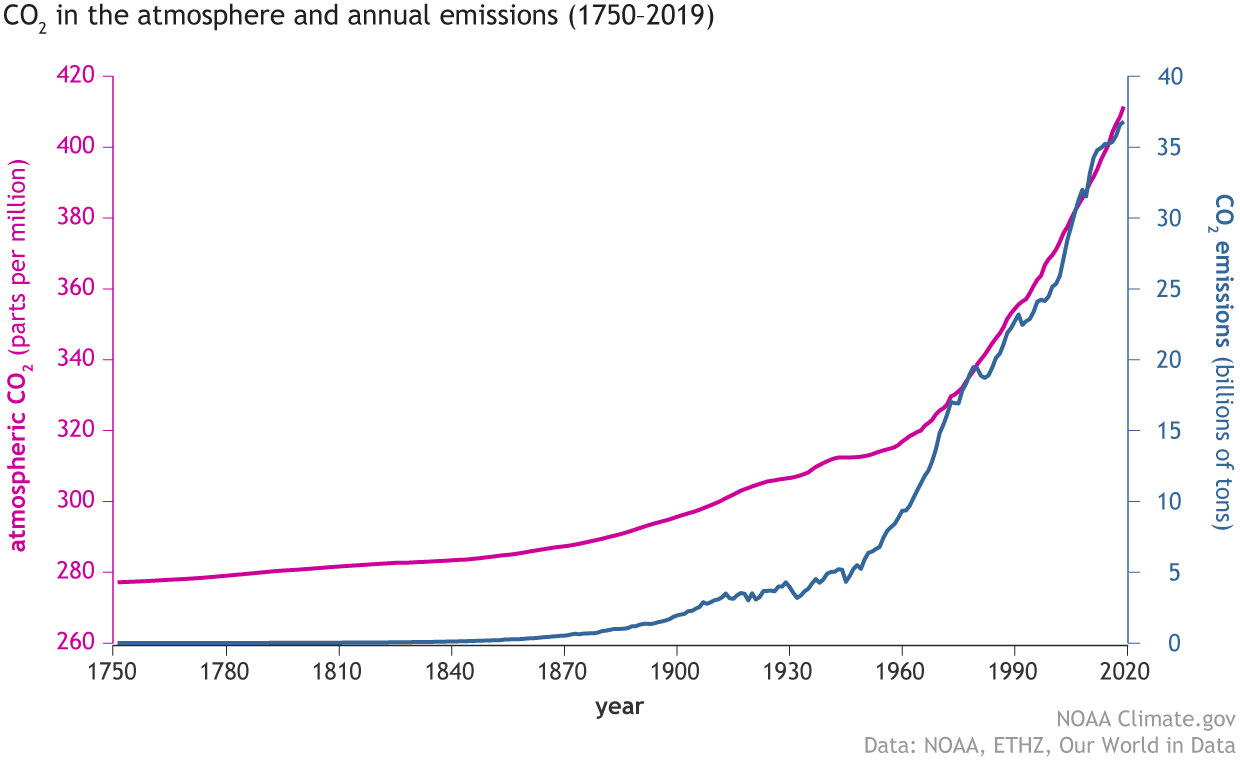Jul 22, 2021
In “The Relationship Between Energy and Climate Change”, I briefly mentioned the carbon cycle. The carbon cycle is the center to everything associated with decarbonization. Every topic discussed - by technologists, economists, politicians, activists, deniers, lawyers, bureaucrats, and even people that don't know what they are talking about - leads back to a component of the carbon cycle. Therefore, understanding it - even from a high level - provides insight to what is being said and provides you with an opportunity to come up with your own thoughts.
So let's go over the carbon cycle.
I provide two depictions. One was previously presented in The Relationship Between Energy and Climate Change. The other is from the UCAR Center for Science Education (UCAR SciEd).
Source: https://scied.ucar.edu/learning-zone/earth-system/biogeochemical-cycles
Source: http://creationwiki.org/Carbon_cycle
They show CO2 has a life cycle that is in perpetual motion. There are some cycle components that produce CO2 and there are some that consume CO2. Nature also provides CO2 storage facilities. The cycle has no starting point nor end point. It just goes around and around. UCAR SciEd describes the cycle with the following steps:
- Carbon moves from the atmosphere to plants. In the atmosphere, carbon is attached to oxygen in a gas called carbon dioxide (CO2). Through the process of photosynthesis, carbon dioxide is pulled from the air to produce food made from carbon for plant growth.
- Carbon moves from plants to animals. Through food chains, the carbon that is in plants moves to the animals that eat them. Animals that eat other animals get the carbon from their food too.
- Carbon moves from plants and animals to soils. When plants and animals die, their bodies, wood and leaves decays bringing the carbon into the ground. Some is buried and will become fossil fuels in millions and millions of years.
- Carbon moves from living things to the atmosphere. Each time you exhale, you are releasing carbon dioxide gas (CO2) into the atmosphere. Animals and plants need to get rid of carbon dioxide gas through a process called respiration.
- Carbon moves from the atmosphere to the oceans. The oceans, and other bodies of water, absorb some carbon from the atmosphere. The carbon is dissolved into the water.
- Carbon moves from fossil fuels to the atmosphere when fuels are burned. When humans burn fossil fuels to power factories, power plants, cars and trucks, most of the carbon quickly enters the atmosphere as carbon dioxide gas. Each year, five and a half billion tons of carbon is released by burning fossil fuels. Of this massive amount, 3.3 billion tons stays in the atmosphere. Most of the remainder becomes dissolved in seawater.
As shown below, the amount of CO2 entering and remaining in the atmosphere annually has dramatically increased since 1859 which is when the commercialization of oil began in the US. Prior to 1859, the curve shows the cycle is basically in a steady state.
Relate this increase to the carbon cycle. As more CO2 enters the cycle, it seeks to establish a new steady state. It does this by spreading the increased load into the atmosphere and oceans. As a result, changes in how the atmosphere and oceans behave are taking place as the new steady state is being re-established. Those changes are summed up as climate change coming in the form of melting icebergs, extreme temperatures, more tornados and hurricanes, more fires, etc.
Every discussion dealing with climate change - no matter the topic, no matter who is giving it - is ultimately associated with one of the components of the carbon cycle. Tax policies favoring renewable energy? Stopping the building of a natural gas pipeline? Changing building codes for greater energy efficiency? Having a US Federal mandated Clean Energy Standard? Carbon taxes? Carbon capture and storage? Purchasing an electric vehicle (EV)? Investing in public charging stations for EVs? All these questions are all associated with cutting the CO2 from human generated carbon. Reversing deforestation? Tree planting? Regenerative agriculture? We are talking about restoring/increasing the Earth's ability to take in more CO2 from the atmosphere.
As noted in The Decarbonization Journey, decarbonization is a complex undertaking with many dependencies on other work. Understanding the carbon cycle provides insight into how to prioritize the decarbonization work and the multitude of dependencies.
So when you are reading, listening, or discussing a facet of climate change, think about where it fits into the carbon cycle and how important it is relative to the other climate change issues and the work that needs to take place.

Tags